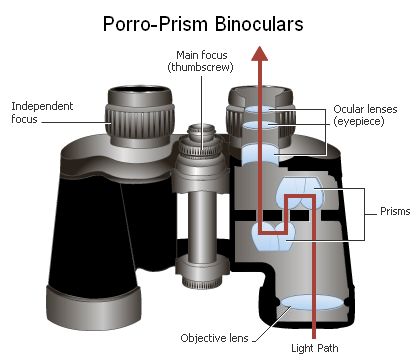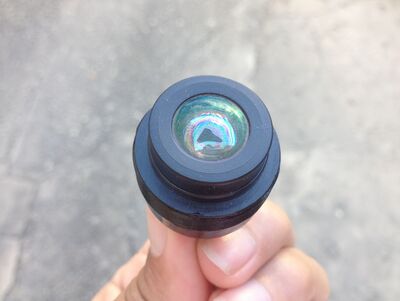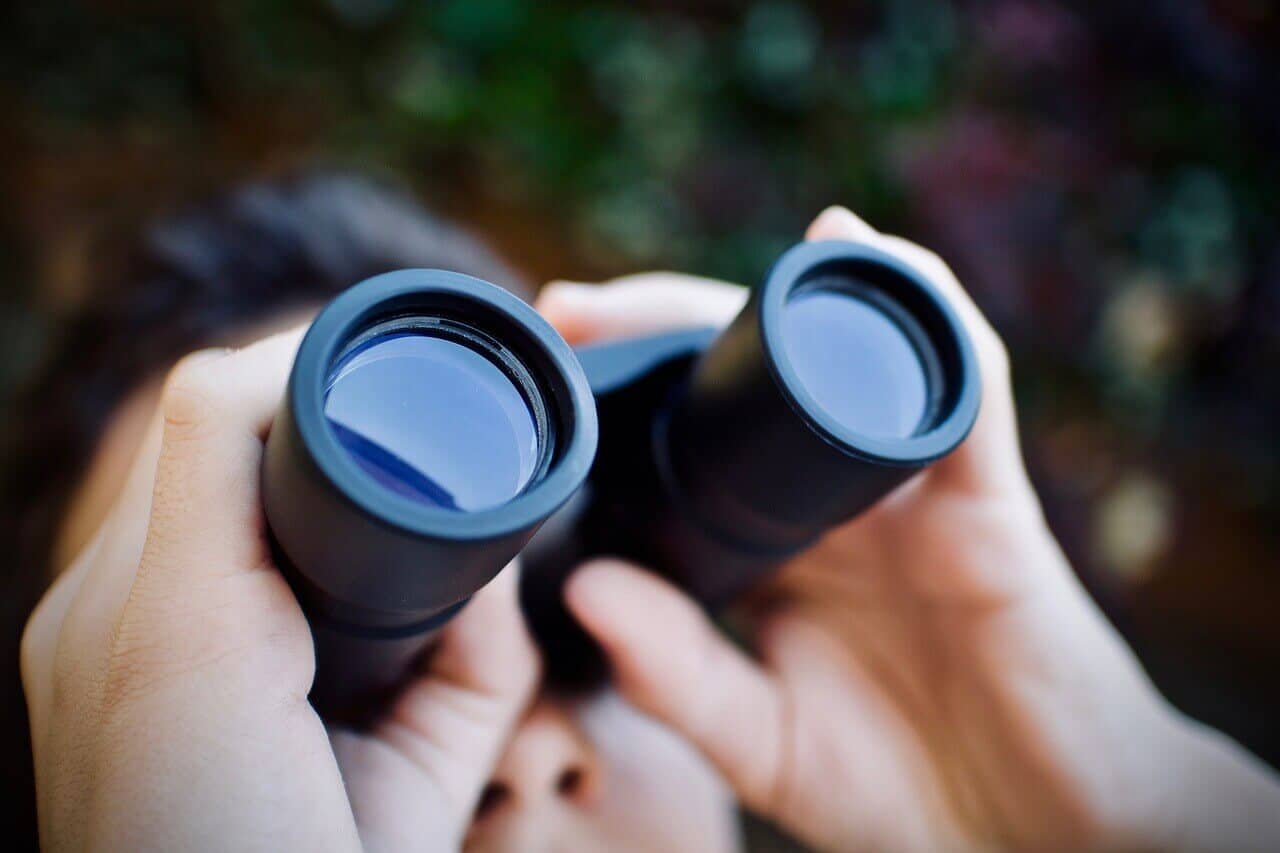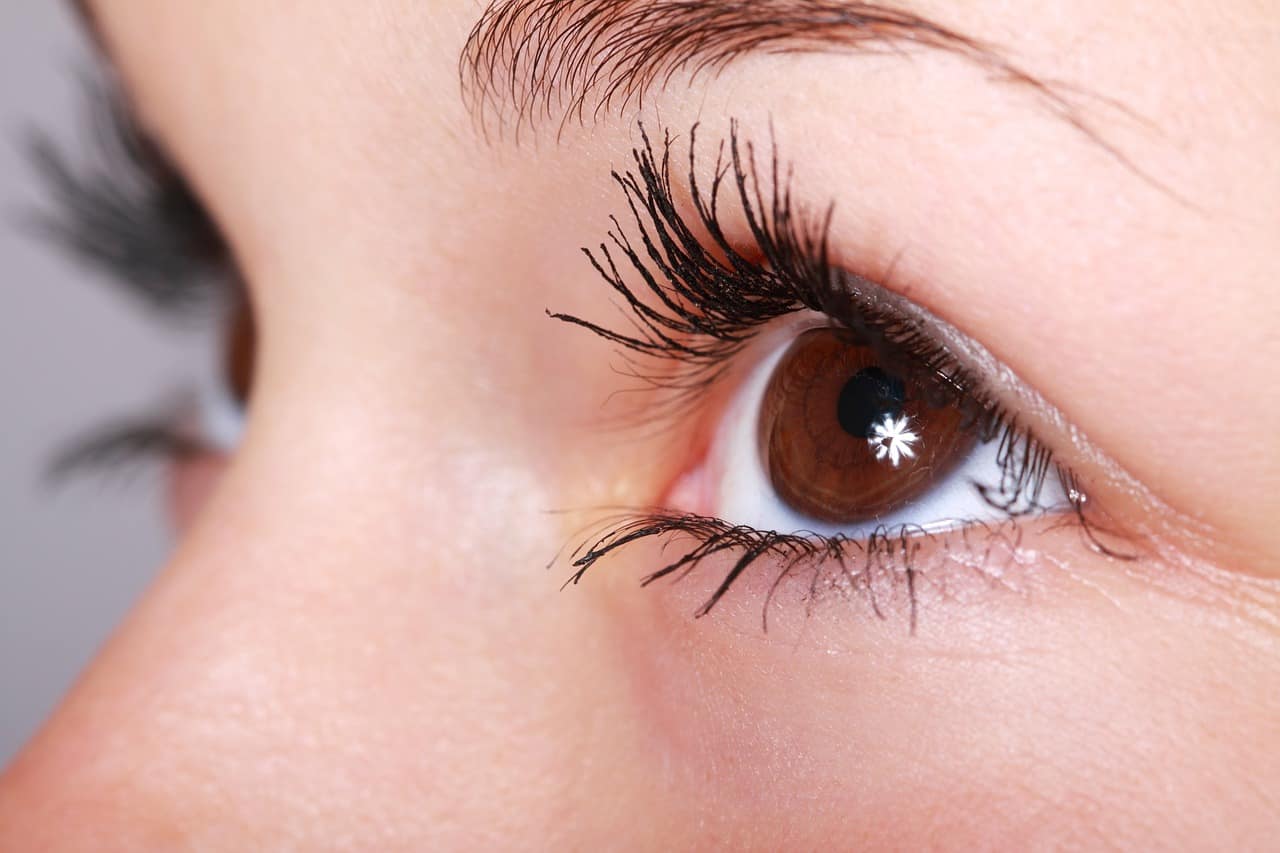Binoculars are a great piece of kit. For centuries, they have been a staple tool for explorers, animal watchers, campers, sailors, and more. If a group of people could benefit from seeing faraway objects up close, then owning a pair of binoculars is a great idea. But, how do binoculars work?

Binoculars have a system of lenses and prisms. At the front of the binoculars, you have the ‘objective lens’. Light enters through this lens upside down. The light is passed through a set of prisms to correct the orientation, before finally hitting the eyepiece lens. The eyepiece lens then magnifies the image, making everything look bigger.

Binocular technology is pretty simplistic. While lens and prism tech has improved over the years, binoculars are not that much different from the way their 18th-century counterparts worked, nor the way their telescope predecessors worked. In fact, binoculars are really just two telescopes pushed together. Let’s go into a bit more depth on how binoculars work, shall we?
What is a Lens?
Before we go any further into details on how binoculars work, it may be worth identifying what a lens is. There are four of them in binoculars, after all. You can also find them in cameras, glasses, smartphones, etc.
A lens is just transparent material. On a cheap set of binoculars, this material may be made from plastic. On a more expensive set, then it may be made from glass.
This transparent material is curved in one of two ways, at least in binoculars. You have concave lenses and convex lenses. We will tell you a little bit more about how each of these works as we discuss each of the lenses in binoculars
The Objective Lens
At the front of your binoculars, you have the objective lenses. These are the lenses pointed at your target object. Light enters through your objective lenses, and that is then passed through the prisms, and ultimately hits your eyes.

The objective lenses are convex lenses. This means all of the light coming through converges and hits a singular point. The light flows through the objective lens upside down. So, without all the other stuff going on inside the binoculars, if you looked through just objective lenses, things would appear to be upside down.
Convex lenses are important for binoculars. They magnify the object. The shape and size of the objective lenses have an impact on how much magnification takes place. If you look at the spec for a pair of binoculars, you will see the focal length listed. The higher the focal length, the lower the field of view of the binoculars, but the more magnified an image appears to be.
The size of the objective lens determines how much light is flowing into those binoculars. The larger the objective lens, the easier you will find it to see at night. This is why many of the proper night-viewing binoculars tend to be quite beefy in size.
Prisms
Because the light coming through the objective lenses is flipped upside down, it can’t be sent straight to the eyepiece. The light has to be manipulated somehow, and binoculars use prisms to do that. prisms are fundamental to how binoculars work.
You probably used prisms back in your high school science class. They are used for manipulating waves of light. Prisms can come in a variety of different shapes, with the triangular prism being the most common of them, although prisms can come in all different shapes. Binoculars do not necessarily use triangular prisms.

Your binoculars will have four prisms in them. Two for each of the objective lenses. The way in which the prisms are set up can differ. The result is the same, though. The light from the objective lens is focused on the first prism. The first prism rotates this light 90 degrees. That rotated light is then reflected toward the second prison, rotating it further 90 degrees. So, by the time the light has passed through both prisms, it is the right way up.
To understand more about Prisms, read our excellent article on the function of prisms.
The Eyepiece Lens
The eyepiece lens, as the name suggests, is the one closest to your eye.

At the end of the process, the concave eyepiece lens receives and disperses light that entered from a single point. Unlike the convex lenses at the front, the eyepiece lenses project the image that we see through the binoculars onto our eyes.
This isn’t the only job of the eyepiece lens, though. Remember, the objective lens would have magnified the object that you are looking at. Well, it would have made it look bigger, but the object would have still looked far away. Eyepiece lenses make the object look smaller but closer. So, the two lenses work together to allow us to see the object magnified. How magnified the image is will be dependent on the magnification level for the binoculars.
Magnification
When you are picking up a set of binoculars, you will want to look at the magnification power. The higher the magnification, the easier it is to make objects at a distance appear larger. Although, you don’t just want to get the highest magnification possible. The higher the magnification, the lower the field of view. So, you can see ‘less’ through the binoculars. A low field of view can make it difficult to track moving objects e.g. birds. Although, a low field of view can also make it easier to focus on distant objects. When shopping for binoculars, always pick up the right magnification level for the task at hand.
The magnification of a pair of binoculars is determined by the focal length of the objective lenses (which magnify image size) and the eyepiece lenses (which reduce image size). The focal length is just a measurement of how good the lens is at either focusing on dispersing light.
Here is the calculation:
Focal length of the objective lens / focal length of the eyepiece lens = magnification level.
The magnification level tells you the size the binoculars make the target object appear. For example, if you had a magnification level of 10x, then any object in the binoculars would look 10x larger than it would if you stared at it without the binoculars. If it was 3x, then it would be 3x larger than it would be without the binoculars.
Read Also: What does 10 X 42 mean?
Final Thoughts
Binoculars are pretty simple contraptions and hopefully, you now understand how they work. Light goes through the objective lenses at the front of the binoculars. As the light comes in, it is magnified, but the light will be upside down. This light is sent to a set of prisms that correct the light’s orientation, and finally hits the eyepiece lens, which reduces the image size slightly. It is the same tech that has been used since at least the 17th century. The only thing that has really changed is the quality of lenses and the prisms inside the binoculars.

UK Born and Bred Optics enthusiast. Love travelling, sports and supporting Bolton Wanderers! Love Vortex & Nikon products.




